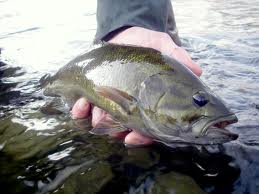|
Description: During this course, attendees will explore efforts to understand, control and manage invasive fish through early detection and assessment, with emphasis on control and management methods. This is critical as invasive species threaten the biodiversity of aquatic ecosystems worldwide and are considered the second greatest threat to biodiversity loss in North America. Exotic species introductions (illegal and intentional) were a factor in 68% of fish extinctions in North America, and the rates of introductions have increased dramatically in the last 50 years impacting nearly every major watershed in the United States. Fisheries management programs have transplanted popular sportfish to provide recreational opportunities and many other aquatic organisms have been planted to enhance fish growth. Habitat loss and degradation, climate change and urbanization have also contributed to the establishment and spread of non-native fish. Regardless of the cause of species introductions, the establishment and proliferation of invasive species often results in the decline and potential extinction of native species, with invasive predators having the most dramatic effects. Controlling and managing non-native invasive fish is critical to the survival of freshwater fish in North America, and attendees of this course will gain an increased understanding of what can be done to minimize the negative impacts of invasive species. | "[Instructor Joe Maroney] was well prepared and really knows just about everything on this subject...excellent examples and references." S. Hoobler, April 2013 |
*Reduced tuition is available for Native American tribes, government employees, nonprofits, students and AFS, NAEP, NEBC, TAEP members. You may register online or by calling the Northwest Environmental Training Center at 425-270-3274.
Please wait to receive a course confirmation email, roughly one month prior to the class, before making any travel arrangements.
Intended Audience: This course is intended for biologists, ecologists and managers seeking an improved understanding of non-native invasive fish species and the methods for prevention, controlling and managing them.
Continuing Education Units: 0.70 CEUs
Course Topics
What is a non-native species and when do they become a problem? What are the biological, social and economic impacts of invasive species? What are the steps in combatting invasive species including prevention, early detection, diagnosis, treatment options, and rehabilitation? Where do non-native invasive species come from? Non-native fish species in the U.S. Conflicts between native fish and non-native sportfish. How can non-native fish species be eradicated, suppressed, controlled, or managed? Types of Physical, Mechanical and Chemical control for non-native fish - Electrofishing
- Barriers (both electrical and manmade structures)
- Piscicide (rotenone and antimycin)
- Nets (e.g. gill nets, fyke nets)
- Dewatering
- Explosives
Laws and regulations regarding non-native species. - Federal and state laws and regulations
- Fisheries Management plans
Non-native fish suppression/eradication projects in the U.S. - Silver carp
- Bighead carp
- Snakehead
Non-native fish suppression/eradication projects in the Western United States, Alaska and Columbia Basin. - Northern pike
- Brook trout
- Lake trout
- Rainbow trout
About the Instructor
 Joe Maroney is the Director of Fishery and Water Resources for Kalispel Tribe of Indians and has 20 years experience as a fisheries biologist. He has a working knowledge of Columbia Basin resource management issues with regard to Federal Columbia River Power System and FERC projects and its impact on anadromous and resident fish resources. He also has extensive experience with resident fish issues throughout the Columbia Basin. His background also includes electrofishing and applying rotenone to streams to remove non-native brook trout, as well as removing northern pike. He is also experienced in constructing barriers in streams to protect native salmonids. Joe is a licensed Washington State Aquatic Pesticide Applicator.
What to Bring
Please bring a pen or pencil, and notepad if you would like to take notes (you may also choose to take notes in your book). Lunch will be on your own, but drinks and snacks will be provided throughout the day.
Billing Information
In order to guarantee a space in a course, the tuition must be paid in full TWO WEEKS before the first day of the course by either check or credit card. State and government agencies paying with a purchase order are allowed payment under the two-week time frame if a copy of the purchase order is received by NWETC.
If You Need to Cancel
Cancellations*-
With 31 or more days notice, we will offer a 100% refund or credit towards a future course. The credit is good for one year and may be applied to any course.
- With 30-8 days notice, we will offer a course credit towards a future course. The credit is good for one year and may be applied to any course.
- With fewer than 8 days notice, there is no course credit available
*Please note that attendee replacement is welcome at any time
Disability Accommodations
Disability Accommodations:To request disability accommodations, please contact us at info@nwetc.org or 425-270-3274 at least 30 days prior to the event.
|









